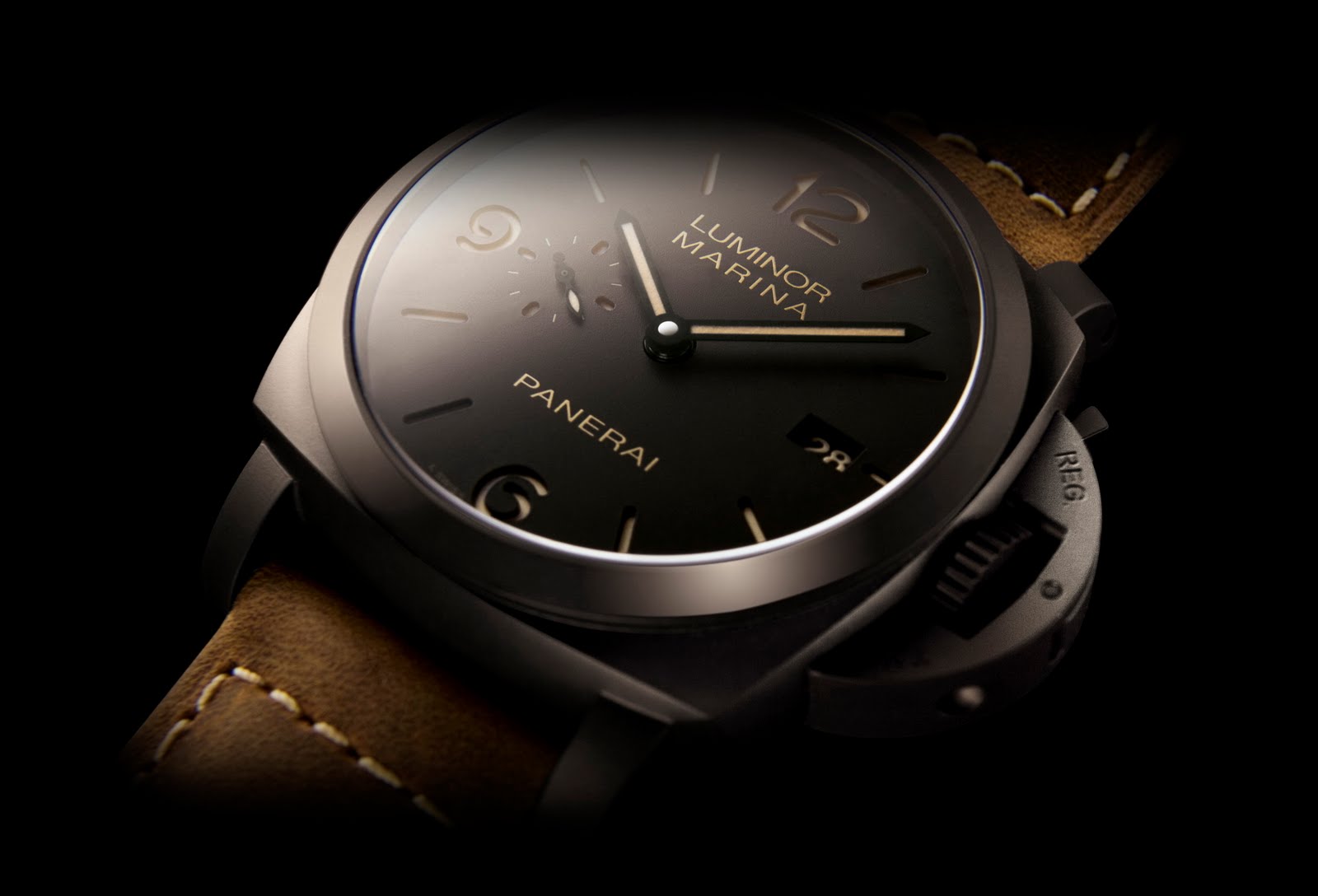
Big Time
From the depths of obscurity to high-flying fashion, Panerai’s outsized watches have come a long way.
By David Mahoney
On the eve of World War II, Panerai watches were developed for men involved in daring underwater exploits. So it seems perfectly fitting that, almost 60 years later, it was a movie star playing a character involved in daring underwater exploits who brought them to the attention of watch enthusiasts around the world.
But first, back to those daring young men of yesteryear. They were Italian navy frogmen, members of the first elite military diving corps in the world, who depended on precise timing to execute their underwater demolition operations. Panerai, founded in Florence in 1860, was a logical choice to develop their submersible watches—the company had already been supplying the navy with high-precision mechanical instruments for more than two decades. Some of these used Panerai’s patented radium-based illuminating substance, called Radiomir, which became the name of the company’s original watch model, introduced in 1938.
Radiomir watches featured a screw-down crown that made them watertight. In subsequent years, Panerai came up with a distinctive lever-locking mechanism fitted into a bridge over the crown that served a similar purpose on its Luminor watches (named for a new trititum-based illuminating substance that replaced Radiomir). But one thing that characterized all Panerai watches was their size: They were huge. The dials of their first watches were a whopping 47 mm in diameter, to maximize visibility in the dark of night and underwater.
It was the watch’s prodigious size that no doubt first caught the eye of Sylvester Stallone when, while filming the move Daylight in Rome in 1995, he came across a Panerai Luminor produced as part of the company’s first small civilian collection. He bought the watch to wear in the disaster film about a collapsed underwater tunnel, and was so enthralled by it that he had Panerai produce a limited-edition model for him—called Slytech—so he could give the watches to friends as gifts.
One of those Slytech watches found its way to Johann Peter Rupert, chairman of the luxury goods company Vendôme (now a division of Richemont Group). He, too, saw something special in the watch—so much so that he set out to acquire Panerai. In 1997, under its new ownership, Panerai was launched as an international brand. The weighty watches quickly gained a cult-like following as they started to appear on the wrists of celebrities such as Arnold Schwarzenegger, Pierce Brosnan, and Hugh Grant.
“From 1936 to 1993, Panerai only manufactured a total of 300 watches,” says David Brenke, who manages the watch department at Bloomington’s Wixon Jewelers, Panerai’s exclusive Minnesota dealer. “Now they manufacture about 35,000 watches a year.” Still, Brenke points out, any given model may come in an edition of only two or three hundred, of which only one watch might find its way to Minnesota.
“The rarity of those pieces is both a blessing and a curse,” says Brenke. “Exclusivity makes them more desirable to knowledgeable watch consumers, but they may have to wait a very long time until they can enjoy the watch on their wrist.”
Although the original Panerai watches incorporated movements made by Rolex and other companies, Panerai now makes many of its own movements at the manufacturing facility in Neuchâtel, Switzerland, where all phases of the watches’ assembly have taken place since 2002. And while relatively spartan models inspired by the hardworking originals are still cornerstones of the brand, a plethora of luxury options are also offered, including cases made of various precious metals and “complications” such as split-second chronographs and tourbillons.
Some things haven’t changed, though. For Panerai, size still matters. “Their smallest models are 40 mm, which actually approaches the upper size limits of many other brands,” says Brenke, who believes that the watches’ large scale definitely contributes to their appeal for his customers willing to plunk down $5,000 to $20,000 for a Panerai.
“It’s a unique look,” says Brenke. “Few people outside of high-end consumers know the brand, so it flies under the radar a bit. But the people who know the watch will recognize it. They’ll see someone on the plane wearing one, and they’ll say, Oh, what are you wearing?”
Which is to say that although Panerai wearers may no longer operate in secret, as the watches’ original owners did, they’re still an elite group.
Wixon Jewelers, in Minneapolis, is a great place to find Rolex watches in the Twin Cities and Minnesota jewelry.


The writer of the blog, whoes all the articles are exquisite, I carefully to taste, high-quality content be appreciated, and when I read slowly, I found that they are delicacy again~~~fighting~~the blogger~~I will frequently visit your home page~~~lol~~~
Where do you order your articles? Or you write them?
Nice article! I love Wixon Jewelers!
Very good site, thanks
You are a very smart person.
Thanks for sharing the excellent information. Your site is very cool. Bookmarked this webpage, and will come back for more articles. You, my friend, ROCK!
Wonderful work! This is the type of info that are supposed to be shared around the net.
Fantastic, love Panerai watches. Thanks for sharing